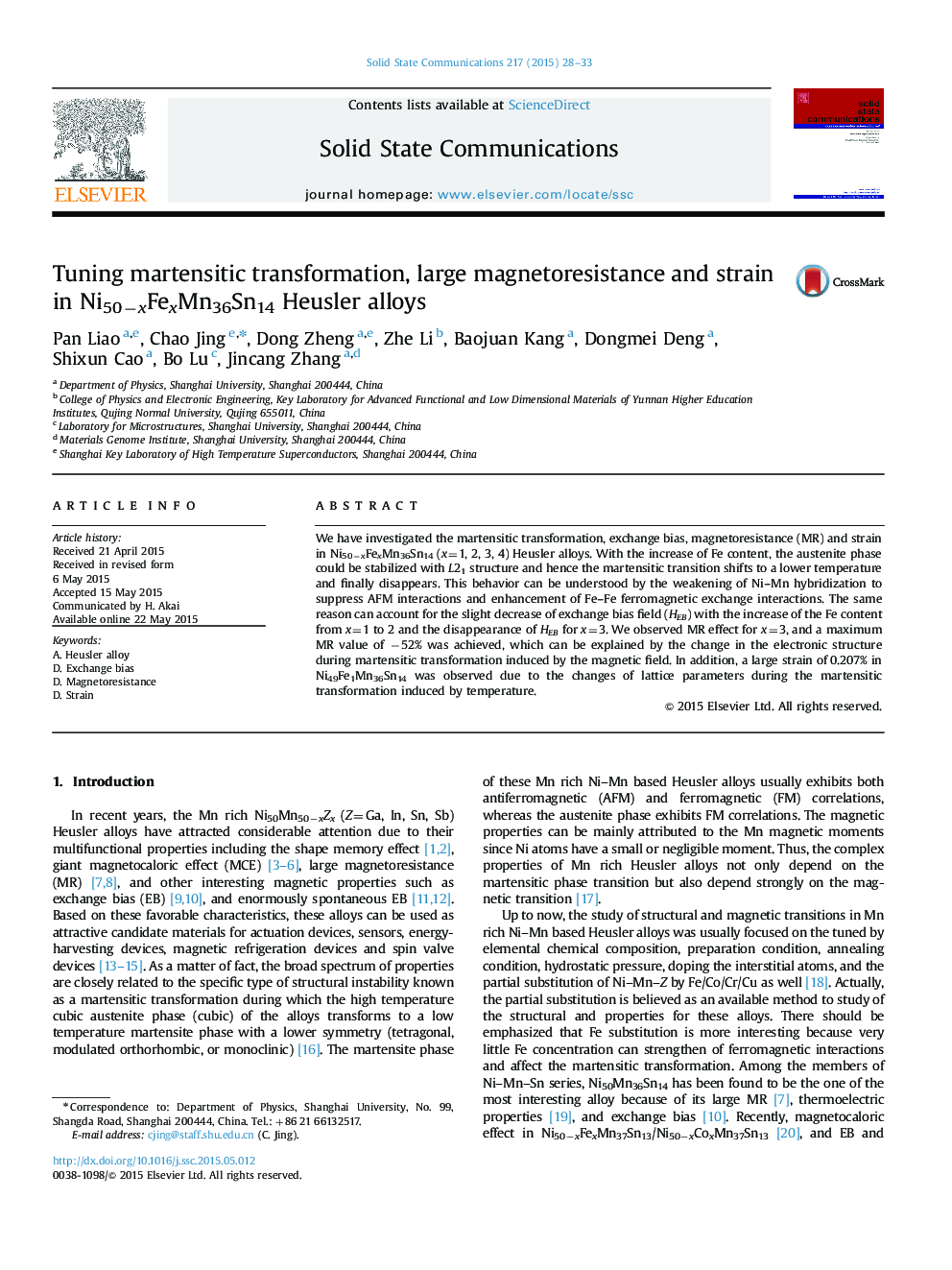| Article ID | Journal | Published Year | Pages | File Type |
|---|---|---|---|---|
| 1591449 | Solid State Communications | 2015 | 6 Pages |
•The influence of the Fe substitution for Ni on exchange bias, magnetoresistance,strain and the related properties have been systematically investigated.•These complicated characteristics associated with the martensitic transformation have been discussed in detail.•A large magnetoresistance of −52% and large strain of 0.207% has been obtained.
We have investigated the martensitic transformation, exchange bias, magnetoresistance (MR) and strain in Ni50−xFexMn36Sn14 (x=1, 2, 3, 4) Heusler alloys. With the increase of Fe content, the austenite phase could be stabilized with L21 structure and hence the martensitic transition shifts to a lower temperature and finally disappears. This behavior can be understood by the weakening of Ni–Mn hybridization to suppress AFM interactions and enhancement of Fe–Fe ferromagnetic exchange interactions. The same reason can account for the slight decrease of exchange bias field (HEB) with the increase of the Fe content from x=1 to 2 and the disappearance of HEB for x=3. We observed MR effect for x=3, and a maximum MR value of −52% was achieved, which can be explained by the change in the electronic structure during martensitic transformation induced by the magnetic field. In addition, a large strain of 0.207% in Ni49Fe1Mn36Sn14 was observed due to the changes of lattice parameters during the martensitic transformation induced by temperature.
